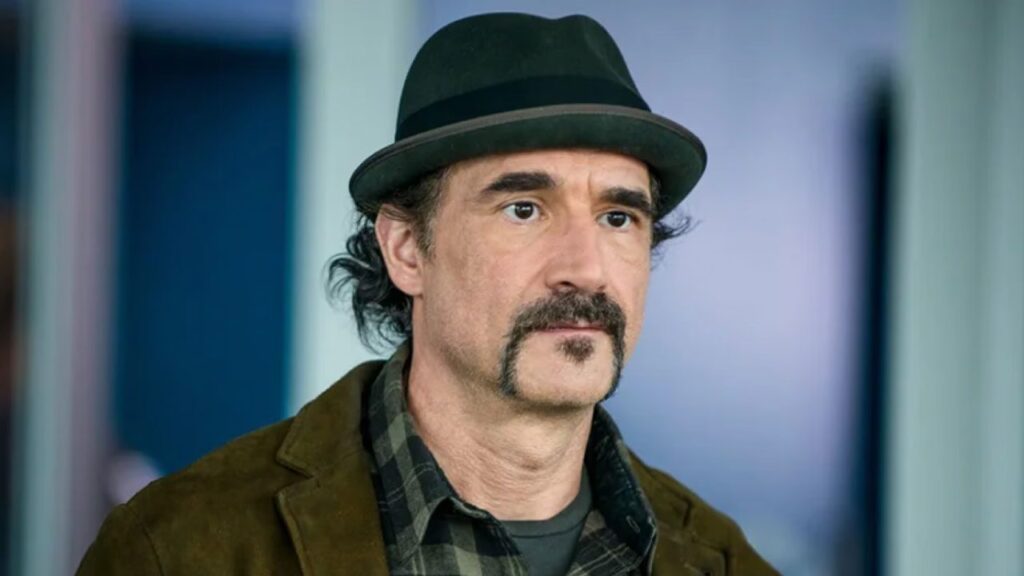You see the words flash across the screen: “Based on a True Story.” Your pulse quickens. This isn’t just some writer’s fantasy; this actually happened. The fear becomes real and tangible, seeping into your reality because, hey, it could happen to you, right?
The Haunting in Connecticut film banks on that exact primal fear. But here’s the brutal truth they don’t want you to know before you press play: you’re being sold a ghost story wrapped in a lie, vetted by frauds, and packaged by Hollywood. The so-called true haunting in Connecticut wasn’t exactly the demonic spectacle you see on screen—it was a murky tale built on contradictions, questionable witnesses, and investigators with more ambition than evidence.
The 2009 horror movie isn’t a chilling retelling of a real paranormal case; it’s a case study in how to profit from a dubious legend. Let’s delve deeper and reveal the underlying issues within this haunted funeral home.
What is the Real Story Behind The Haunting in Connecticut?
Forget the Campbells. The real family at the heart of this storm was the Snedekers. In the 1980s, Al and Carmen Snedeker rented a former funeral home in Southington, Connecticut, to be close to a hospital for their nephew’s cancer treatment. They soon reported a cascade of horrors: disembodied voices, violent physical assaults, and supernatural phenomena. They claimed to discover the home’s mortuary past and alleged it was a den for necromancy and perversion.
But here’s where the story gets shaky. The Snedekers called in the now-infamous paranormal investigators, Ed and Lorraine Warren. Indeed, they were the same team responsible for creating The Conjuring universe. The Warrens, self-proclaimed experts, “verified” the haunting as a brutal case of demonic infestation. They brought in author Ray Garton to write the book, In a Dark Place, which would become the official source material.
The problem? Ray Garton has been the case’s most vocal critic. He revealed that the Snedekers’ stories were wildly inconsistent, changing with each telling. He suspected the family’s severe drug and alcohol problems were a more likely source of their “visions.” When Garton reported his doubts to the Warrens, he was given a chilling instruction: “Just make it up. Make it scary.” The so-called “true story” was a narrative he was contractually forced to fabricate.
How The Film Twists Reality Into a Tired Ghost Story
The film Haunting in Connecticut intensifies the already dubious foundation, transforming


Where the Film Diverges Dramatically:
- The Cancer Connection: In the movie, the son Matt (Kyle Gallner) is the one with cancer, making him a “sensitive” bridge to the spirit world. This is a classic horror trope—using illness as a supernatural conduit—that was largely invented for the film.
- Necromancy and Ectoplasm: The entire subplot involving the undertaker Ramsey Aickman and his teenage medium Jonah conducting necromancy experiments is pure fiction. The film’s most visually striking scene, where Jonah vomits a torrent of ectoplasm, is a direct lift from debunked Victorian-era séance frauds. Houdini and the Amazing Randi exposed the fraud a century ago, yet the film presents it with a straight face.
- The Body Horror: The discovery of corpses sewn into the walls? A complete fabrication designed for a gross-out climax, with zero basis in the Snedeker claims or any police record.
Watch the official trailer for The Haunting in Connecticut right here to see how these fictional horrors were marketed as real. [YOUTUBE LINK PLACEHOLDER]
The Best Performances: How the Cast Almost Saved This Sinking Ship
Let’s get one thing straight: the failure of The Haunting in Connecticut is not on the actors. In a shocking twist, the cast delivers a series of powerhouse performances that are tragically wasted on a hollow script and lazy direction. They are the only flicker of humanity in this digitally rendered haunted house.
Virginia Madsen as Sara Campbell: The Beating, Broken Heart

Madsen, an Oscar-nominated actor, doesn’t just show up for a paycheck. She becomes Sara Campbell. She is the film’s emotional anchor, and she grounds the entire supernatural circus in raw, palpable desperation. You don’t just see her fear; you see the exhaustion of a mother watching her son die, the financial strain of a family on the brink, and the fierce, primal love that pushes her to make a desperate “executive decision.”
Her performance is a masterclass in silent acting—the way her face crumbles when no one is looking, the tremor in her hands as she cleans yet another mess. She is the reason you care, even when the plot is falling apart around her.
Kyle Gallner as Matt Campbell: The Ghost in the Machine

Casting a believable cancer patient is a minefield, but Kyle Gallner navigates it with stunning, painful authenticity. With his sunken eyes, sallow skin, and a physique so frail it looks like a strong wind would break him, Gallner is a boy being consumed from the inside. His performance isn’t just about the physicality; it’s in the haunted, thousand-yard stare of someone who is already halfway to the other side.
When the ghost apparitions appear, his terror isn’t a cheap scream; it’s the quiet, resigned horror of someone who recognizes a kindred spirit in the darkness. He is the perfect tragic conduit for the film’s supernatural elements, making you believe, for a moment, that a dying boy could see the dead.
Elias Koteas as Reverend Popescu: A Crisis of Faith You Can Feel

While the character of a priest is a haunted house cliché, Elias Koteas refuses to play it that way. His Father Popescu isn’t a ghostbuster with a Bible; he’s a fellow patient, a man whose body is failing him and whose faith is just as fragile.
Koteas brings a world-weary gravitas to the role. His eyes hold a deep, profound sadness, and you never get the sense he’s confident that “good will win out in the end.” He’s a man staring into the same abyss as Matt, and his performance adds a layer of philosophical dread that the script desperately needs but never earns on its own.
Why The Haunting in Connecticut is a Masterclass in Wasted Potential
The tragedy is that these powerful performances are wasted on a director, Peter Cornwell, who has no faith in atmosphere. Instead of building on the dread his actors so brilliantly provide, the film relies on an exhausting barrage of pop-up scares.
How the Scares Actually Work (Spoiler: They Don’t):
Every creaking door, every sudden cat, and every loud BANG on the soundtrack is a cheap trick. The film is so packed with these “Surprises” that it becomes monotonous. The creepy ghost apparitions and visions of rotting flesh are rendered meaningless by their overuse. The potential eeriness of the ectoplasm scene is butchered by frantic flash-editing, sacrificing the mood his actors worked so hard to build for a momentary jolt. It’s the cinematic equivalent of someone yelling “Boo!” in your ear for two hours.
How The Film Fits Into the Grisly History of “True Story” Horror
The Haunting in Connecticut is a direct descendant of The Amityville Horror, another Warren-vouched “true story” that has been widely debunked. This mini-genre follows a predictable playbook: a family in crisis (financial, medical), a cheap house with a dark secret, the involvement of paranormal “experts,” and a subsequent media blitz of books and movies.
The film borrows Amityville’s tropes verbatim: the father (Martin Donovan) descending into drunken, abusive despair; the family’s claims being dismissed as side effects of medication or mental instability; and the house itself as a malevolent character.
Behind the Scenes of a Hoax:
The real horror isn’t in the movie; it’s in the boardroom. This film was directly adapted from an episode of the Discovery Channel’s “A Haunting” series, which itself was a dramatic re-enactment of Garton’s fabricated book. It’s a “true story” that’s three layers deep in exploitation. The production company, Gold Circle Films, saw enough profit in the formula to later produce The Haunting in Connecticut 2: The Ghosts of Georgia, proving that audiences’ appetite for this brand of “based-on-truth” horror is insatiable, regardless of the facts.
What Do Fans and Critics Really Think?
The critical reception was a bloodbath. Reviewers universally panned the over-reliance on jump scares and the derivative plot. As one critic aptly noted, the film has “so many scares they threaten to grow monotonous.” The consensus is that it’s a “slickly produced commercial ghost story” that achieves “zero effect whatsoever” due to its calculated, unscary nature.
Fan reaction is more divided. On platforms like Reddit and horror forums, a clear split emerges. One camp feels cheated by the fraudulent “true story” claim and finds the film forgettable. The other camp, often younger viewers or those less familiar with the background, admit to finding it a “fun,” scary movie for a late-night watch, often singling out the committed performances of Kyle Gallner and Virginia Madsen. This divide highlights a key point: when divorced from its problematic claims of authenticity, it functions as a passable, if deeply flawed, supernatural thriller. For a deeper dive into the real-world fallout and fan theories, check out this video essay breaking down the Snedeker family’s story.
